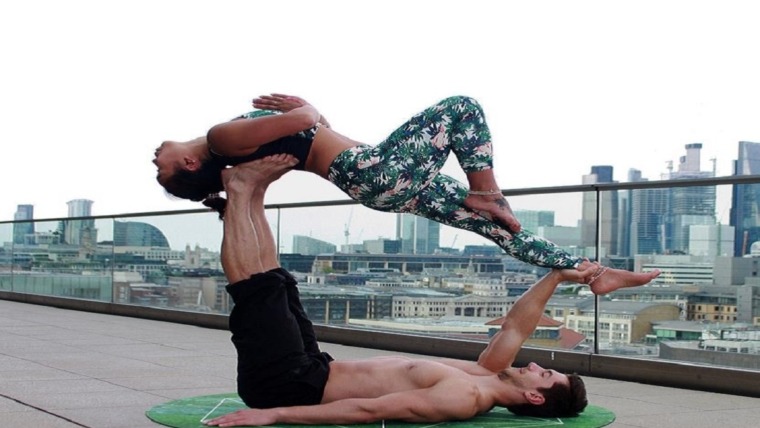
...... and prevent those pesky pains
Written by Cherie Rivas
Do you remember way back when you were a kid and your parents and/or grandparents were constantly reminding you: “sit up straight”…. “don’t slouch in your chair”…. “chest out, shoulders back”…?
Do you ever feel any physical sensations, (now that you’re an adult), like an aching back…. tension in your shoulders…. reduced joint mobility and shallow breathing (just to mention a few)….?
Hmmm…. could it be that your parents and/or grandparents were potentially right (doh!!!)…. and that your physical symptoms are actually related to your posture? In today’s modern world, where we spend literally hours and hours each week, hunched over our desks or workbenches, and our computers, devices or tools of trade, it’s so easy to compromise our posture, and end up with some serious issues.
Adding to that, other physical demands such as carrying our babies, kids & other loads, (shopping, washing, heavy school bags), with improper form or movement patterns, can result in a whole range of physical symptoms creeping up on us over time. Because of the slow onset of physical symptoms, we may not even recognise that they’re actually directly related to our postural alignment.
When we maintain good posture (or an ideal postural alignment), our entire body is well balanced and works harmoniously together, and the pressure and tension on supporting structures, such as ligaments, tendons and cartilage, remains minimal. However, when our posture becomes compromised, various parts of our body need to accept additional forces.
The length of time and the amount of additional pressure on those supporting structures, will impact upon the longer term consequences of misaligned posture. When compromised posture remains the ‘norm’ over time, compensatory changes will take place throughout the body and will eventually lead to (largely undesirable) anatomical adaptations. One of the most severe forms of postural dysfunction is the ‘kyphotic’ or hunchback posture. Other than the more obvious physical signs associated with this exaggerated forward curvature of the upper spine, early warning signs associated with this potential outcome include:
- Mild back and neck pain,
- Forward positioning of the head,
- Internal rotation of the shoulders,
- Shallow or difficulty breathing.
Fortunately, when identified in its earlier stages, these more permanent and severe symptoms can be easily fixed and even prevented to begin with. Just as muscles and joints may anatomically adapt towards the hunchback position, so too, can they be retrained to find their correct position. A regular 20 – 30 minute routine of simple stretching and strengthening exercises (at least twice a week) can be a highly effective way of combating the problem for most people.
The trouble with many of our ‘hunched’ activities is that the muscles across the front of our chest become tight, pulling our shoulders forward even more. The muscles across the back of the shoulders (as a consequence), become even more stretched. The simplest solution then, is to stretch the chest muscles and strengthen the back muscles in order to compensate for the compromised posture.
Before You Begin:
Always seek medical clearance prior to participating in any exercise program, if you are in any high risk categories. When exercising, remember to engage the muscles of your core and take care of your lower spine, particularly when rotating.
Best Stretching for Hunched Posture: (Perk up your posture)
Wall Angels
Position yourself with your back up against a wall, and with your weight evenly distributed across the back of your shoulders. With your hips also against the wall and your heels as close to as possible, raise your arms up level with your shoulders and bend your elbows at 90°, pushing shoulders, arms, elbows, forearms and wrists into the wall behind you.
As you slowly exhale, straighten your arms directly overhead, trying to keep as much of your arm against the wall as possible. As you inhale, return your arms to the 90° position. Aim for 12 repetitions.
Wall or Doorway Stretch
Stand at a 90° angle close towards a wall or door frame and place the inside of your forearm against its surface. Position your bent elbow at shoulder height and turn your body away from your positioned arm.
Your upper chest muscles will become more stretched with your elbow lowered below shoulder height and your lower chest muscles will become more stretched with your elbow raised above shoulder height. Work through all three positions, holding each stretch for 20-30 seconds. Repeat with the opposite arm.
Shoulder Blade Squeeze
Standing up straight and tall, link your fingers together behind your back and engage your core muscles. As you exhale, squeeze your shoulder blades slightly down and towards each other, as if you were trying to touch them together in the middle of your back. Hold the position for 10 seconds and aim for a total of 12 repetitions.
Best Strengthening for Hunched Posture: (Perk up your posture)
Bent-over Rows
Kneel on a bench or chair, and place your hand (of the same side), directly below your shoulder for additional support. With your opposite leg slightly back and core engaged, raise a weight (eg: dumbbell / full water bottle / resistance band, etc), by tucking the elbow of your active arm up towards your waist as you exhale.
When the weight makes contact with your body, extend the active arm back towards the ground as you inhale. Aim for 12 repetitions and repeat with the opposite arm.
Seated Rear Lateral Raise
Sitting on a chair or bench with feet slightly in front of knees, bend over and rest your torso on your thighs and hold a weight in each hand behind your ankles.
As you exhale, raise your arms up and out to the side (keeping a slight bend in each elbow), until your elbows are at shoulder height. Inhale and return weights towards the ground. Aim for 12 repetitions.
External Shoulder Rotations
Lay on your side with your knees slightly bent forward and neatly ‘stacked’, supporting your head with your resting hand. With your active arm holding a weight, rest your elbow in at the waist with your forearm across your torso towards the ground. As you exhale, keep the elbow bent at 90° and raise your forearm up towards the ceiling, rotating through the shoulder. Aim for 12 repetitions and repeat with opposite arm.
5 Best Benefits of Better Posture:

Reduced Lower Back Pain
Compromised posture puts stress on the spine and supporting muscles which can lead to constriction of blood vessels and nerves as well as issues with discs and joints.
Muscles and Joints
Ideal postural alignment decreases wear and tear of joint surfaces which can result in joint pain or other conditions such as arthritis. It can also minimise the risk of injury caused by ligaments under unnatural loads.
Breathing
Proper posture ensures that the airways remain open, allowing for deeper breathing. This enables sufficient oxygen to circulate throughout your body, ensuring that each of your body systems function more efficiently.
Improved Circulation and Digestion
Maintaining proper posture allows the digestive tract to sit in its natural position, which ensures proper digestion and absorption of food. Improved posture can also prevent other issues such as reflux and constipation.
Confidence
Standing tall and proud can make you appear more slender and enable you to walk with a little more spring in your step. This can do wonders for your self-confidence and creates a presence that can attract positive attention.








